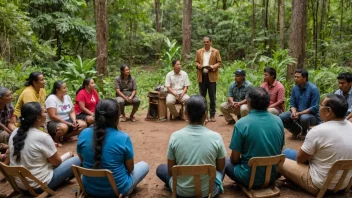Introduction
In this article, you will learn how pandemics impact disaster relief strategies and how organizations can adapt to these challenges. We will explore key steps that can be taken to ensure effective disaster response during a health crisis, focusing on coordination, communication, resource management, and community engagement.
Step 1: Assess the Situation
Before implementing any disaster relief strategy, it is crucial to assess the situation. This includes understanding the impact of the pandemic on the community and the specific needs that arise during such a crisis.
- Gather Data: Collect information from local health authorities, NGOs, and community leaders to understand the scope of the disaster.
- Identify Vulnerable Populations: Focus on those most affected, such as the elderly, people with pre-existing conditions, and low-income families.
- Evaluate Resources: Determine what resources are available, including medical supplies, food, and shelter.
Step 2: Establish Communication Channels
Effective communication is essential in disaster relief. During a pandemic, misinformation can spread rapidly, making clear and accurate communication even more crucial.
- Utilize Multiple Platforms: Use social media, local news, and community bulletins to disseminate information.
- Engage Community Leaders: Work with trusted figures in the community to share information and combat misinformation.
- Provide Regular Updates: Keep the community informed about ongoing relief efforts, health guidelines, and available resources.
Step 3: Coordinate with Health Authorities
During a pandemic, health authorities play a vital role in disaster relief strategies. Coordination with these entities can enhance the effectiveness of your response.
- Establish Partnerships: Form alliances with local health departments, hospitals, and NGOs to streamline efforts.
- Follow Health Guidelines: Ensure that all relief efforts comply with health and safety protocols to prevent the spread of the virus.
- Integrate Health Services: Provide health screenings and vaccinations as part of the disaster relief efforts.
Step 4: Adapt Resource Management
Resource management must be flexible and responsive during a pandemic. This includes both physical resources and human capital.
- Inventory Supplies: Keep an updated inventory of available supplies and equipment.
- Train Volunteers: Provide training for volunteers on infection control and safe distribution of resources.
- Implement Remote Solutions: Use technology to facilitate remote interactions for assessments, training, and distribution.
Step 5: Foster Community Engagement
Community involvement is crucial for successful disaster relief, especially during a pandemic. Empowering the community can lead to sustainable solutions.
- Encourage Local Leadership: Identify and support local leaders who can mobilize their communities.
- Promote Volunteerism: Create opportunities for community members to volunteer, whether in person or virtually.
- Gather Feedback: Regularly seek input from the community to assess needs and adapt strategies accordingly.
Conclusion
In summary, adapting disaster relief strategies during a pandemic involves assessing the situation, establishing communication channels, coordinating with health authorities, managing resources effectively, and fostering community engagement. By following these steps, organizations can ensure that their disaster response is effective and responsive to the unique challenges posed by a health crisis. Remember, the key to successful disaster relief is flexibility and the ability to pivot as circumstances change.






